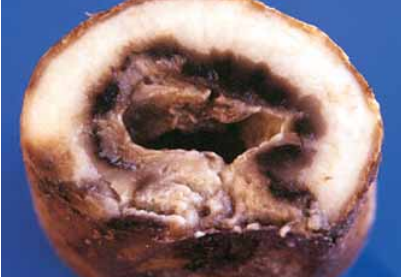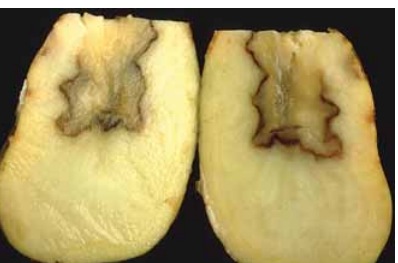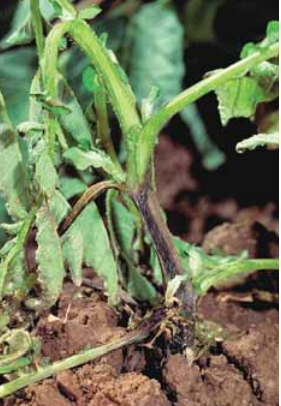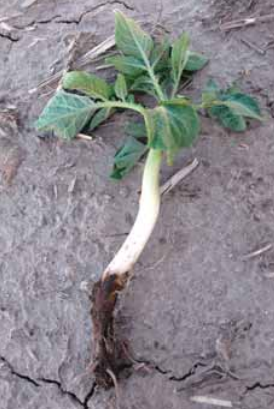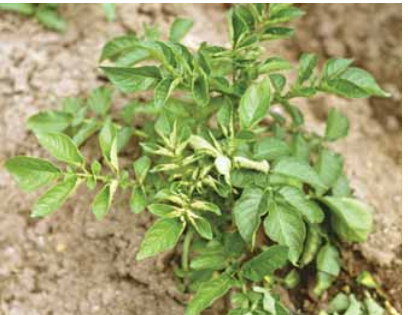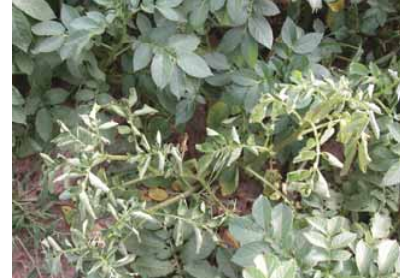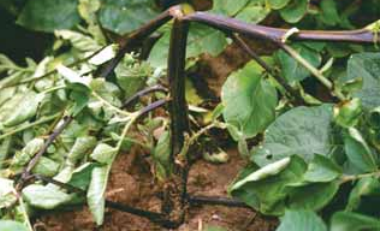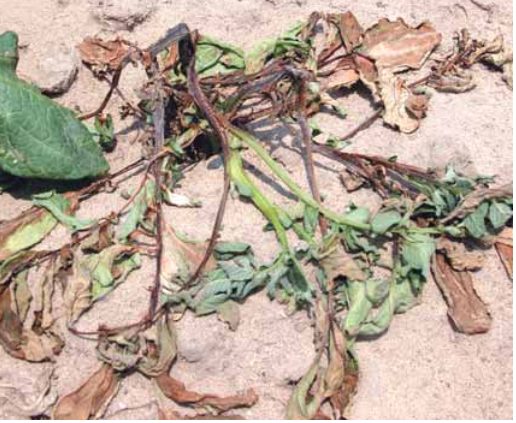Pathogen. The blackleg bacterium is primarily seed- borne. Contaminated handling equipment such as seed cutters and picker planters contribute to the spread of the bacterium to healthy seed tubers. Wind-blown rain may be a source of inoculum.
Disease development. If the spring is wet and cool, infected seed and sprouts usually rot before or early after emergence, resulting in uneven stands. If spring weather favours rapid emergence, infected seed will produce weak plants with stems showing an inky black decay extending up from the infected seed piece.
During the season, bacteria from decaying seed pieces and stems are spread by water in the soil and contami- nate new tubers. Wind-blown rain spreads the bacteria to healthy plants.
The disease can spread in storage, particularly after wet harvests. Some varieties, such as Monona and Chieftain, are very susceptible to blackleg.
Symptoms. Blackleg symptoms may develop at any time during the season. New tubers infected from the mother plant have lesions that start at the stem end.

